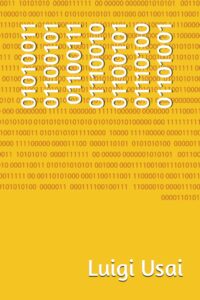Info necessary to understand the Atlantis history
To understand Atlantis, it is first necessary to know at least these topics, otherwise it is impossible to understand what we are talking about. I will slowly update this page to give everyone the opportunity to understand me: I’m not a good communicator.
1) third chapter of the Timaeus, Plato
2) Critias, Plato
3) In Sardinia lived a dwarf elephant, the Mammuthus lamarmorae
4) Macaca Majori, a dwarf Barbary ape that lived in Sardinia
5) Under the Mediterranean Sea passes a tectonic subduction fault, where the African tectonic plate pushes under the European tectonic plate;
6) The tectonic subduction fault of the Mediterranean is the same that destroyed the cities of Pompeii and Herculaneum in Naples, Italy through the famous eruption of Vesuvius;
7) In Sardinia the God Bull was venerated; in the place called Matzanni (in the Sardinian language the word Matzanni recalls the word Mazzammini, which means intestines), there is still a temple where animals were sacrificed to the Bull God. The cult of the Bull is an ancient Sardinian custom. In Sardinia there is also the island of the bull; there are many archaeological finds of bull protomes; the light that enters the Santa Barbara nuraghe projects a bull on the wall on special dates of the year linked to agriculture; Among the prehistoric artificial caves that make up the necropolis of Sant’Andrea Priu there is a very particular trachytic rock located on the top of the hill, almost overhanging the valley below, which due to its particular shape is called the “Campanile” or the “Toro “(Toro means Bull).
8) Plato speaks of the wind in Atlantis. Between Sardinia and Corsica there is one of the most famous sailing centers in the world precisely because of the particularities of the wind. Just like in the Platonic tales. The wind was a very important element because Atlantis, that is the Sardinian-Corsican block, was a naval power: since the engine did not yet exist, which even Leonardo da Vinci did not have, the wind was the propulsive element of the ships, so it was very important in culture ancient.
9) Atlantis was “ancient for the ancients”: this is demonstrated too. Researchers found for instances part of an Arthropleura armata exactly inside the Tratalias-Santadian Atlantis Capital, near Carbonia. They even found the ancestor of the giraffe, called “sardomeryx oschirensis”.
10) in Tratalias have been found, exacty inside the Atlantis Capital circles, that there are lots of hidden tresures under the mud and the soil. If you want to start your personal research, search for the “Nuraghe Bastuppa” which emerged from the Monte Pranu lake, in Tratalias.
11) Atlantideans represented their capital and their Empires with the concentric circles carved on rocks, but maybe even with pendants and other tools. Proofs of these concentric circles there are tons online: I posted some image just to help researchers.
12) Atlantidean catastrophe probably was more than one. After one of these catastrophe, part of Atlantideans migrate to found the Sumerian People. Now we wrongly believe that hydraulic engineering was invented by Sumerians, but it was Atlantidean engineering, and Plato told us that Atlantideans were experts in building canals. In Sardinian language, in Sardo Campidanese dialect, which I do speak because I’m born here, “Su Meri” (Sumeri is the Italian word for Sumerians) means The Owner, The Master. When I was a child I thought this was just a coincidence. Sumerians called themselves “the black heads”: Corsican Flag is a Black Head, Sardinian Flag is 4 Black Heads… we have all the answers in front of our eyes, we just have to use our brains. And History will be change for good, forever.
13) Atlantis has a Graben Horst geological structure: this is why part of it sinked, but I suppose this is not the only cause: there have been many concomitant causes that contributed to the sinking of the Corsican Sardinian Block. The Campidano is a Graben. And the Graben do sink! This is science, not sciencefiction, and I’m not talking about aliens… Every explanation is rational and can be understood by a child.
14) The National Security Agency put a super secret military base in La Maddalena, on the Sardinian Corsican Block. They imported super big moles to investigate and create new tunnels, after an accord with the Italian Government with Andreotti, a very well known italian politician. N.S.A. put submarines in La Maddalena in what is now known as Sardinia, and secretly explored everything. We know for sure because an American Military Submarine had an accident in Teulada; The submarine Uss 768 Hartford had an accident between the Sardinian islands of Caprera and Santo Stefano.
“Oklahoma City” nuclear attack submarine accident
Already on 22 September 1977 the attack submarine “Ray” of the X squadron of the VI
US fleet had hit the seabed in southern Sardinia and had to go to La Maddalena to carry out repairs.
It means Americans spent at least 50 years learning and studying the hidden shores of Atlantis, and we have the proofs because submarines had accidents which were recorded by the press, leaving a trail of info that now we can understand better, now that we know the Sardinian sea around Corsica and Sardinia contains the rest of Atlantis.
and this coincidence? An Italian submarine “incidentally” sinked in Teulada sea, RIGHT INSIDE THE ATLANTIS CIRCLES… what a coincidence, isn’t it?
https://www.morgandiving.com/news.php?id=5
http://www.nonukes.it/rna/news325.html
Americans put a military base inside the Atlantis Capital, right in Teulada! This lead us to think that Atlantis is a military secret and they don’t want civilians to get these informations. Probably they considere archaeology and history too a military asset for having a tactical advantage on other cultures. But I simply don’t give a fuck and publish all the same these informations.
x) here I add you some sentences from the book I’m publishing:
The Sardinian-Corsican paradigm tries to clarify some points relating to prehistory that currently seem obscure, but seen from a particular point of view, the individual pieces of the puzzle all return to their place. The Corsican Sardinian block was a single island, emerged land. This island was rich in traditions and culture, and was known to the ancients by many names, including Atlantis, deified with the name of Thetis and evoked in the bible with the name of Tarsis. Some catastrophic event not yet ascertained occurred, which submerged it, also destroying the Greek army against which it was at war, events narrated in the third chapter of Timaeus and in Critias by Plato. The capital of the Corsican Sardinian block had as its center a hill next to Santadi, and from there a series of concentric circles branched off, part of which can still be seen today from satellite. There is a notable toponymy linked to the Atlantean myth, as many villages keep names linked to the cult of the water sources of Poseidon. Acquacadda, S’acqua callenti de Susu, S’acqua callenti de Basciu, the castle D’acquafredda di Siliqua and the sources of Zinnigas, are all toponymic linked to the Posidonian sources. Perdaxius (meaning stony ground) were probably the stone masters from whom the Atlanteans took the stones for their constructions; in Laconi, Sardinia, the tridents of Poseidon were found engraved on Neolithic and Paleolithic menhirs, and are still preserved in the Laconi Museum. Sardinia is also very rich in sacred water wells, and this too is a clear Atlantean reference. Not everyone knows about the “Messinian salinity crisis”, during which Sardinia and Corsica were joined due to the lowering of the level of the Mediterranean Sea by over one hundred and thirty meters, and could be covered on foot. At that time, Sardinia and Corsica and a large part of the currently submerged coasts formed what appeared to be a large island, the Corsican Sardinian Block, also called Teti or Tarsis or Atlantis. Following the sinking of the Corsican Sardinian block, they said that “you could sail through Tarsis”, that is, in the Strait of Bonifacio, located right between what remained of the island and which now looked like two new islands, Sardinia and Corsica.
Furthermore, the text shows that following the catastrophes that occurred in Atlantis, that is to say the Corsican Sardinian submerged continental block, there were migrations to other places. The mysterious people of the Guanches, for example, are an Atlantean migration, which laid the foundations for reaching the United States; this explains the origin of the name Atlantic Ocean, that is Ocean of Atlantis: they were perhaps the first to have crossed it.



